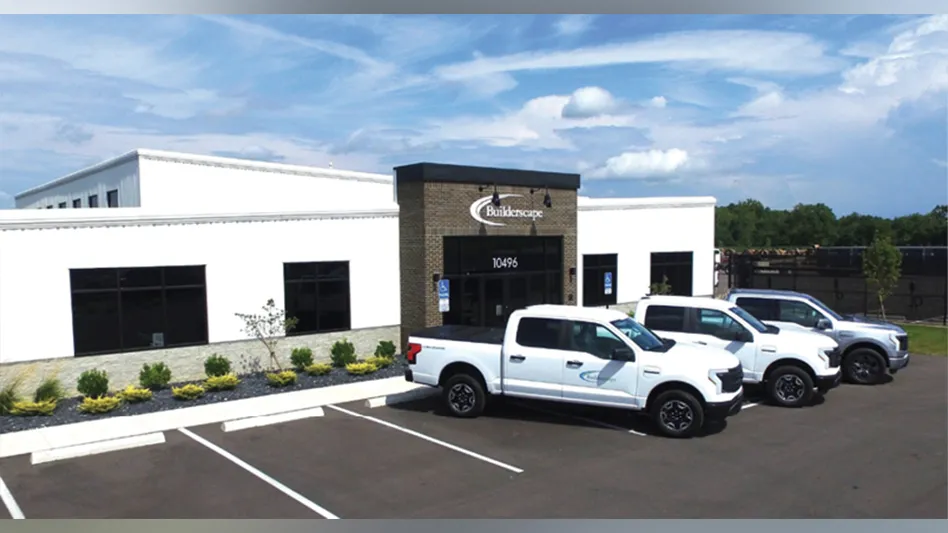Ask any lawn care operator (LCO) to rate his top five business challenges and inevitably each list will include labor costs and the increasing expense of clippings disposal. In an effort to manage these issues, more LCOs are looking to plant growth regulators (PGRs) for relief.
Plant growth regulators are used by LCOs as a tool to reduce their workload. These products are usually applied to diminish the growth cycle of turf and ornamentals resulting in less frequent mowing and pruning requirements and a reduced amount of yard waste. The market for these products has been on the rise for the past decade and continues to grow.
“The lawn care business has an excellent opportunity for a couple of reasons,” explains Buddy Reid, specialty division manger, Helena Chemical Co., Cuthbert, Ga. “No. 1, the biggest cost for a lawn care operator is labor. PGRs will reduce the number of times you will mow a property in a year. The second thing is clippings and what to do with them. If you have fewer clippings that means you have less to dispose of.”
PGRs can be used as a chemical edger around trees and sidewalks reducing the need for mowing. When applied to ornamentals, the need for pruning is reduced. They can also help lessen the amount of messy and hazardous fruit dropped from trees. “The savings in labor costs appears to be pretty significant in climates where you have to prune three times a year,” points out Bill Culpepper, president, SePRO Corporation, Carmel, Ind. “The products can also be used for groundcovers and, in some cases, on flower plantings, growth habits can be controlled.”
Understanding what PGRs do and using proper application techniques can help LCOs alleviate their labor- and efficiency-related concerns.
WHAT PGRs DO. Although PGRs have been commonly used by golf course superintendents for many years, LCOs are realizing the benefits of these products in their efforts to lower labor costs. According to Steve Stansell, lawn market manager for Syngenta Professional Products, Greensboro, N.C., those LCOs using regulators on estate-type lawns are providing their customers with beautiful, lush turf. “These contractors are using plant growth regulators to really strengthen up the grass, to give it a nice compact look, and to give it a stronger root system which manages stress better.”
“Some of the growth regulators can help from a monetary standpoint with the lawn care companies,” says Ben Cicora, business manger for herbicides and plant growth regulators, Bayer Environmental Science, Research Triangle Park, N.C. “If a contractor can bid out a job, and they may not have to mow every week, it increases their bottom line. Ultimately, anytime you look at the labor situation, regulators will always play into account with LCOs.”
According to Doug Obermann, turf and ornamental products manager, PBI Gordon, Kansas City, Mo., use of these products requires less labor, which frees the contractor to devote time to other areas. “The labor savings is one thing. They do save a lot of time on mowing and pruning; however, the benefit is that the LCO now has time to allocate to another project. They don’t have to manage that piece of time. They can use it somewhere else.”
Studies have shown that although regulators will not necessarily save a contractor on the cost of product, they will affect the amount of labor utilized on large accounts. “If you compare the dollar value of the product to the dollar value of the labor you save, you break even,” remarked Barry Troutman, vice president, technical services for ValleyCrest Cos., Sanford, Fla. “In the analysis we’ve done, we’re within $5 to $10 out of a $1,000 of breaking even so we’re not saving money using the product, but what we are doing is reallocating labor,” Troutman explains. As with most companies, ValleyCrest utilizes this extra labor to fill gaps that exist as a result of fewer available employees.
Use patterns can be based on several factors including:
- Length of the growing season
- Product label instructions
- Availability of trained applicators
According to the U.S. Department of Labor, 4.0 million occupational injuries occurred in the private sector during 2004. Of these, 68 percent or 2.7 million occurred in service industries. Use of PGRs enables contractors to lessen the on-the-job injuries sustained by their employees.
“They’ve done reviews with crews, and minor injuries from trimming and pruning have lessened,” Obermann reports. “With fewer injuries, LCOs have less paperwork to complete and, in the end, more time to devote to the business.”
“The gas hedge shearer is probably the most dangerous piece of equipment we use,” Troutman states. “The injuries often aren’t severe, but there are more injuries on that piece of equipment than any other we use. If somebody even nicks his finger, you’re going to spend up to $1,000 by the time you get him drug tested and as a result of the management time that goes into that so the liability reduction is almost as significant as the labor reduction.” On that same note, Stansell recommends that regulators be utilized in hard-to-mow areas that can present a danger to LCOs.
The disposal of clippings continues to be a challenge for operators. “In many parts of the country, it is not just the time savings, it is the disposal into the waste centers,” Obermann continues. “There’s cost involved in disposal.”
In some states, such as Florida and Missouri, the disposal of grass clippings in landfills has been banned. Colorado State University Cooperative Extension reports that 1,000 square feet of grass can generate approximately 200 pounds of clippings annually, and up to 20 percent of trash sent to landfills each year is yard waste.
Most companies see a drastic change in the amount of yard waste generated after PGRs are used. “We’ve seen 60 to 70 percent reduction in green waste,” Troutman says. “In Florida, we can’t put any green waste or yard waste in a landfill. It has to go to a separate site where it is recycled, and we pay a hefty fee to have that done.”
These products, through the suppression of cell growth, alter the development rates of turfgrass and ornamentals by as much as 50 percent. “The product prevents cell elongation,” Culpepper explains. “When you’re looking at plants typically hedges or shrubs, you are not limiting the leaves; you are getting a darker, greener color. You get the aesthetic benefits, flowering is enhanced and flowers appear to be more numerous on the plants.”
This adjustment for ornamentals can produce radical results without damaging the plant. In fact, PGRs can actually benefit a plant by redirecting growth from the top to the roots. “Using PGRs requires less pruning and it fills in holes very well,” reports Keith Reid, president of Bioscapes Integrated of Virginia Beach, Va. “It produces a lot of lateral branching and plants will be denser and thicker as a result of the spraying.”
“We’ve tried it at a couple of malls, and it has done miracles,” praises Mark Morawa, superintendent with The Brickman Group, West Palm Beach, Fla. “I am using a plant growth regulator on every one of my accounts. We include it as part of the contract to maintain the areas. Down here in Florida, the plants grow so rapidly that we don’t have to touch the property again for two to three months. We are saving on the bottom line. We save on labor so we’re able to focus on other things, such as providing better detail of the property than we were able to do before.”
Keith Reid, who has been using regulators for more than 15 years, reported that one-third of his business involves spraying PGRs.
APPLICATION EDUCATION. According to Culpepper, application of regulators is fairly simple. “You just sprinkle granulars around the drip line of the plants on the soil and the root will absorb it. It is best to make applications before or immediately following a pruning. You should see results in six to eight weeks depending on the species and location.”
PGRs are most beneficial when applied during the growth season, typically April through June. Generally PGRs should not be applied during a stress period involving heat, drought, diseases and insects. According to Obermann, “some climates may use these products twice a year. They can be used in one application or at multiple times for ornamentals and generally one time for turf.”
The products come in both liquid and granular form. Typically a liquid PGR is the ideal for turf. Granulars work best on shrubs and trees. “The most important factor when applying is coverage,” Obermann notes. “You have to make sure you have even distribution.”
“Obviously equipment that gives you precision application, such as a spray boom with a marker so you know where you have already sprayed and don’t overlap, is ideal,” Buddy Reid recommends.
The coastal regions of the United States include the biggest users of plant growth regulators due to the warmer climate. Contractors in states such as Georgia, Florida, Texas and California rely heavily on regulators. Arizona and Nevada utilize these products due to irrigation concerns.
Awareness of these products is growing. The Los Angeles Unified School District has a plant growth regulator on the list of approved pesticide products for use around schools. The Portland, Ore. airport also utilizes these products.
“The ornamental market is growing like crazy,” Obermann notes. “Labor is key for the lawn care operators. Companies don’t have the bodies. When we ask them what they want, they say ‘I want to do more with less.’”
“For the commercial lawn care company, it makes sense to use the products; however, the homeowner is being billed by the week so the maintenance contractor may want to mow as much as possible,” Cicora explains. “Ultimately the decision to use regulators has to do with a company’s growth strategy. If spraying costs more than mowing, it probably doesn’t make sense. You have to find out what works best for the operator.”
Landscape operators face daily challenges to the success of their business. Labor is at the forefront of every manager’s mind. Finding solutions that offer a more efficient business model is essential. Plant growth regulators can be that tool. Troutman says it best, “A PGR never gets sick and it always shows up for work.”

Explore the February 2006 Issue
Check out more from this issue and find you next story to read.





